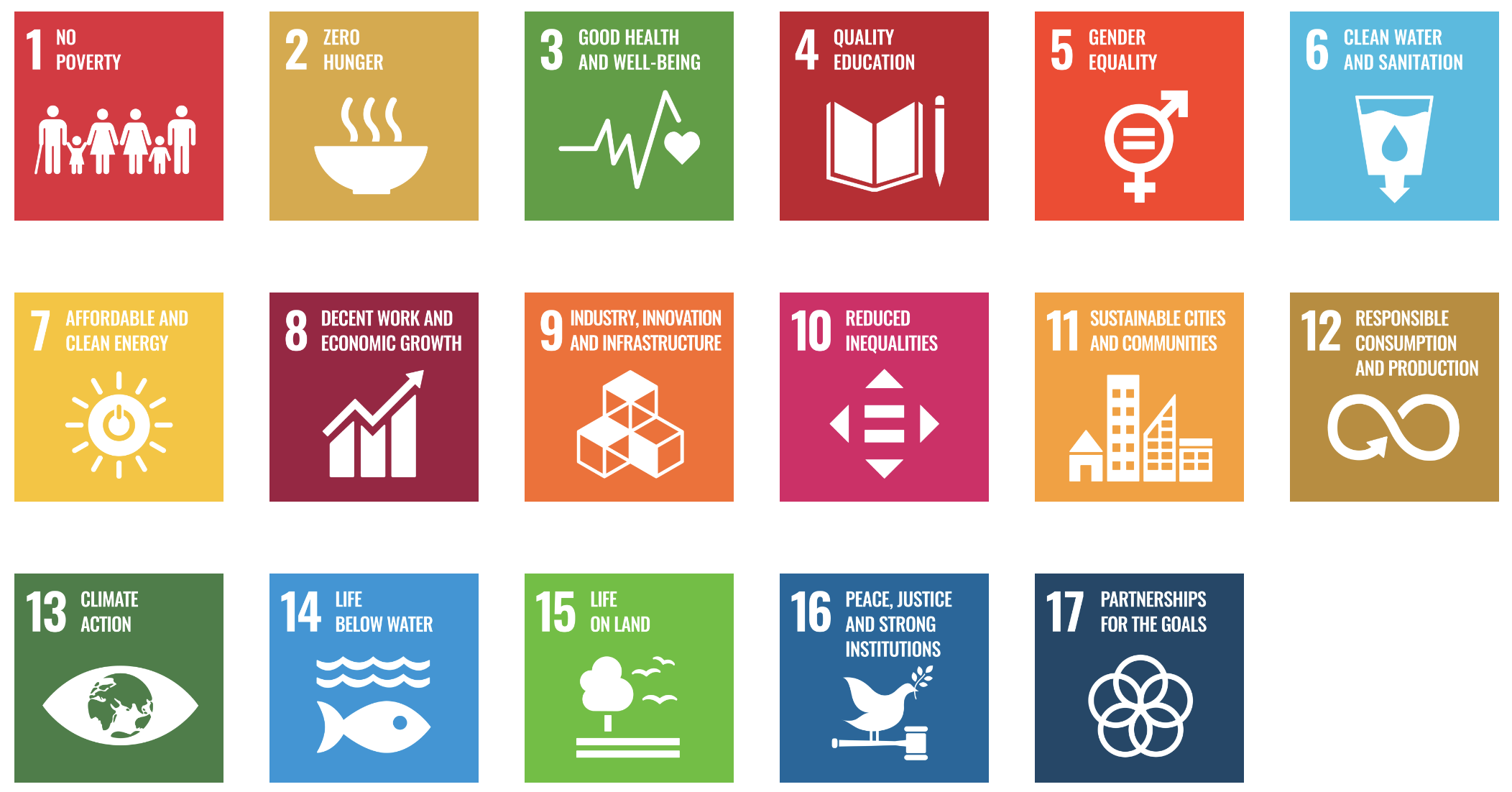Project
Theme

The theme for course projects this year is Local Actions for Global Impact. Our world is evolving rapidly, especially over the past few years, when the pandemic has made us re-think the meaning of a good life and just society.
In this design project, students are encouraged to select one of UN Sustainability Goals listed below and design an app that would enable people to take actions locally towards addressing that goal.
The final product is a high-fidelity prototype; no implementation (i.e., programming) is involved. Project teams must choose from one of the subthemes (e.g., A: Economic), one of the target problems (e.g., A-3: good health and well-being) and one of the subproblems within the target problem (e.g., A-3.1).
Subtheme A: Economic
- A-1: no poverty
- A-1-1. declines of volunteers (article)
- A-1-2. high cost of living (e.g., child care, food, housing)
- A-1-3. low levels of charitable donations (article)
- A-2: zero hunger
- A-2-1. unnecessary food waste
- A-2-2. poor nutrition due to rising food costs
- A-2-3. food insecurity (article)
- A-3: good health and well-being
- A-3-1. unhealthy habits (e.g., related to diet, fitness, internet use)
- A-3-2. lack of support for mental health
- A-3-3. difficulty finding family doctors
- A-4: decent work and economic growth
- A-4-1. barriers to employment
- A-4-2. lack of career mentors
- A-4-3. lack of job hunting skills
Subtheme B: Environmental
- B-1 responsible consumption and production
- B-1-1 poor energy and water use habits
- B-1-2 poor understanding of materials and recycling
- B-1-3 consumption of irresponsibly produced goods (e.g., clothing, coffee)
- B-2 climate action
- B-2-1 high carbon footprints and waste (commute, overtourism)
- B-2-2 over consumption of and reliance on foreign/imported goods
- B-2-3 lack of preparation for climate futures/emergencies, e.g., extreme heat, flooding, wind, forest fires (article)
Subtheme C: Social
- C-1 quality education
- C-1-1 lack of teacher-student connection due to mass education
- C-1-2 lack of tutoring and enrichment opportunities, especially for low income students
- C-1-3 toxic social environments in schools (e.g., racisms, bullying, social isolation for marginalized students, etc)
- C-2 reduce inequalities
- C-2-1 inequalities faced by newcomers (e.g., migrants, refugees, international students)
- C-2-2 gender inequalities in STEM field
- C-2-3 gap in understanding and connection between people of different cultures, religions, sexual orientations
- C-3 sustainable cities and communities